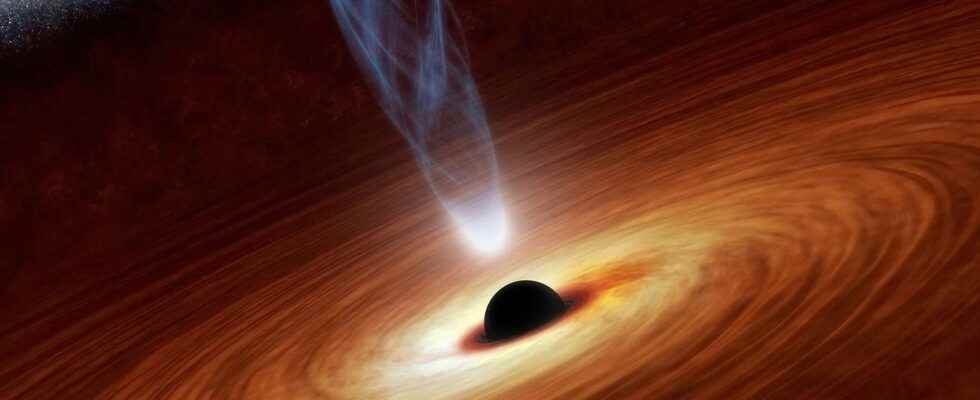A team of astronomers have discovered a supermassive black hole of a few hundred thousand solar masses in a dwarf galaxy, Mrk 462. The discovery of this “small” black hole hidden by gas and matter could allow researchers to learn more about the formation and life cycle of these cosmic phenomena.
Among the cosmic ogres that are supermassive black holes, it sometimes happens to find specimens of small size. A team ofastronomers has published January 10 a press release reporting the detection of a supermassive black hole at the heart of the dwarf galaxy Markarian 462 (Mrk 462). Located at 110 millionlight years, Mrk 462 turns out to be a compact system although more sparsely populated than other galaxies such as the Milky Way. The researchers used the space telescope Chandra, which has detected several black holes since the start of its mission. The study of the galactic core of Mrk 462 would put scientists on the track to understand the evolution of black holes.
Supermassive black hole for a dwarf galaxy
The characteristics of the black hole of Mrk 462 arouse the curiosity of scientists. Jack Parker, astronomer from the University of Dartmouth (United States), explained on the occasion of a conference of theAmerican Astronomical Society, on January 10, that ” this supermassive black hole is one of the smallest ever found », despite its 200,000 masses solar (, 200,000 times the mass of the Sun, or 1.989 × 1030 kg). Discovering this phenomenon at the heart of a dwarf galaxy turned out to be a complex task. Mrk 462 has a particular configuration, aggregating a few hundred millionstars, against hundreds of billions in a spiral galaxy “classical” such as the Milky Way or M31 (Andromeda). With its status as a dwarf galaxy, Mrk 462 thus has a relatively compact appearance, the supermassive black hole is obscured by the gas and the matter gravitating around.
This parameter greatly complicated its detection. In the case of larger galaxies, the discovery of supermassive black holes is usually done through the observation of stars orbiting in its environment, studying their spectra (including redshift, or red shift) or even their speed of gravitation. But, in the case of the black hole of Markarian 462, which turns out to be “buried” under a large quantity of gas, the researchers were helped by a device of incredible precision: the Chandra telescope.
Chandra tracks X-rays
As the material contained in the accretion disk falls towards the event horizon of a black hole, it will experience a strong increase in pressure, which will induce monumental heat gain. This will cause X-ray radiation, which some devices such as the Chandra Space Telescope can pick up. Chandra, launched in 1999 by NASA, is equipped with three spectrometers and a camera to conduct precise observations of objects such as pulsars, remnants of supernovae or black holes, making it one of the most successful observatories of the past 30 years.
The discovery of the black hole of Mrk 462 makes it possible to suppose the existence of such phenomena in other dwarf galaxies, and thus to learn more about the evolution of black holes into gargantuan monsters of several million solar masses. Some of them formed very quickly after the beginnings of theUniverse (about a billion years after the big Bang), without the researchers being able to explain how. If the thesis of thecollapse gravity of a massive star into a black hole is the most widespread today, they could also arise from the collapse of matter into dense clouds of dust and cosmic gas.
If the study of Markarian 462 is only in its infancy, NASA astronomers do not hide their desire to continue to track dwarf galaxies and their black holes to learn more about these mysterious phenomena.
—
Futura in the Stars, it is the unmissable event for astronomy and space enthusiasts. Every 1st of the month, find us for a complete tour of the ephemerides of the month, with advice for best observing what is happening in the sky. A special episode published every 15th of the month will offer you to learn more about a particular object or event that will mark astronomical and space news.
—
Interested in what you just read?
.
fs3
